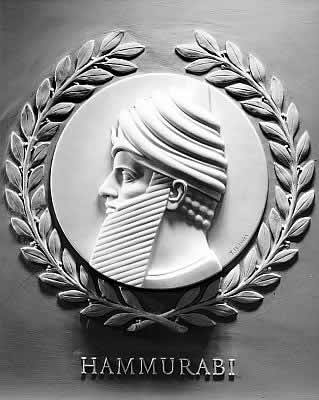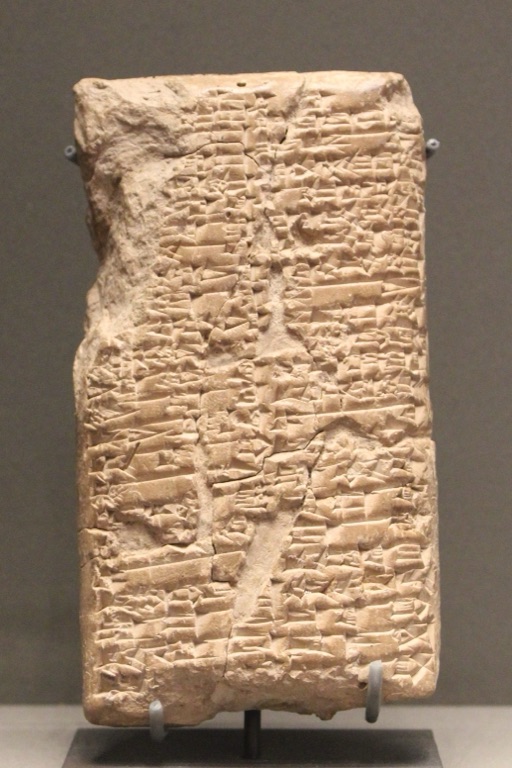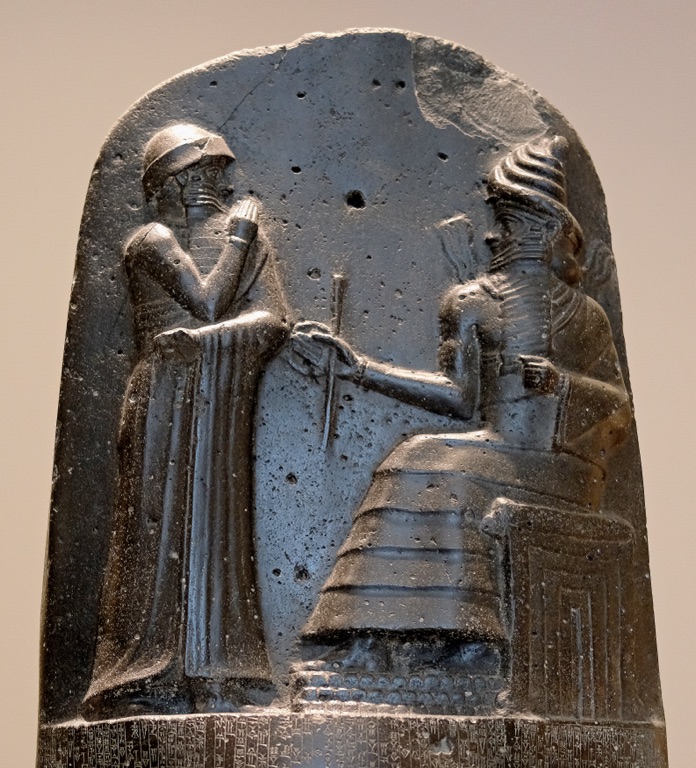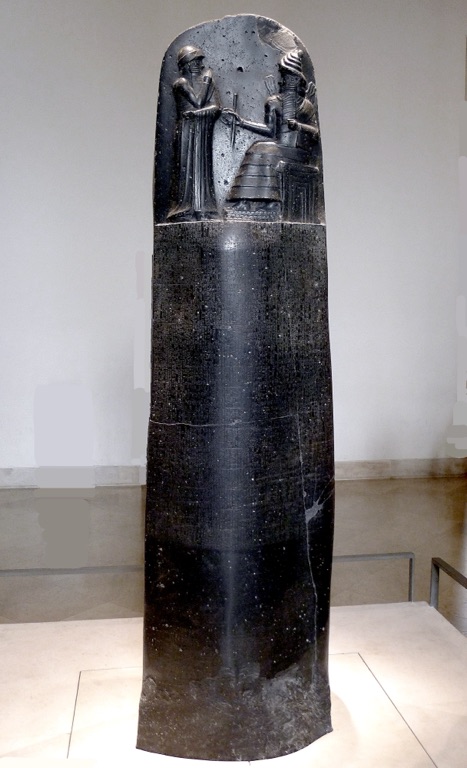Summary
The Advent of Legal Order
The Code of Hammurabi stands as a monumental achievement in the annals of legal history. Enacted by the sixth king of the First Babylonian Dynasty around the 18th century BCE, it is one of the oldest deciphered writings of significant length in the world. This set of laws introduced a comprehensive system that sought to regulate various aspects of life. It covered topics from property rights and contracts to family law and professional standards. The Code emphasized the principle of “an eye for an eye”, which aimed to ensure justice through reciprocal punishment. Its 282 laws were meticulously organized, reflecting a society that valued order and hierarchy. The Code of Hammurabi has been celebrated throughout history for its pioneering role in the development of a structured legal system.
Get your dose of History via Email

Enduring Legacy and Historical Facts
More than a simple legal compendium, the Code’s prologue heralded King Hammurabi’s mission to prevent the strong from oppressing the weak and to see justice done to widows and orphans. Etched onto a diorite stele, the Code’s text is preserved at the Louvre Museum and is available for public viewing. Its impact resonates in modern legal systems, contributing foundational concepts such as trial by evidence and the presumption of innocence. Despite millennia having passed, the tenets shaped by Hammurabi’s wisdom continue to influence contemporary understandings of fairness and the rule of law. The Code of Hammurabi remains a testament to human civilization’s enduring quest for justice and societal organization.
The Rule of Hammurabi
An Ancient Code of Laws
The Rule of Hammurabi stands as one of history’s earliest and most complete written legal codes. King Hammurabi of Babylon, who reigned from 1792 to 1750 BCE, commissioned this extensive collection of laws. The significant achievement aims to bring order, fairness, and justice to his kingdom. Notably, the code covered a wide range of societal aspects. These include family relations, business conduct, and criminal law. The fundamental basis of Hammurabi’s code was the concept of retribution, often summarized as “an eye for an eye”. This principle aimed to ensure that punishment matched the severity of the offense.
The Stele of Hammurabi
One of the most remarkable aspects of Hammurabi’s Rule is the medium through which it has been preserved. The laws were inscribed on a towering, seven-foot-tall stone stele. Moreover, they were scripted in the cuneiform text of the Akkadian language. The stele not only served as a record but also a public display of the laws, allowing the Babylonian citizens to know their rights and the legal procedures. The top of the stele shows Hammurabi receiving the laws from the sun god, Shamash, which attributed divine origin to the code and reinforced its authority in the eyes of the people.

The Lasting Legacy
Hammurabi’s laws have transcended time to influence modern legal systems. They offer a remarkable glimpse into Mesopotamian society and its governance. Moreover, they underscore the human desire for order and fairness governed by a set of rules. The code’s detailed nature gives us insights into the daily lives, values, and norms of ancient Babylonians. Its impact on justice systems, including concepts like the presumption of innocence, continues to echo in our legal frameworks today. The Code of Hammurabi remains integral to understanding the evolution of law over centuries, resonating with societal values of balance and equitable justice.
Understanding Hammurabi’s Code
Origins in Ancient Mesopotamia
King Hammurabi of Babylon, who reigned from 1792 to 1750 B.C., saw the need for order. To meet this, he compiled a set of laws known today as Hammurabi’s Code. Carved onto a stele, this ancient text surfaces as one of the oldest deciphered writings of significant length in the world. These laws molded ancient Mesopotamian society by setting clear rules. With almost three hundred laws to guide them, the people of Babylon knew the consequences of their actions, which ranged from trade to theft. This boost in legal clarity helped stabilize the region. It allowed people to understand their rights and obligations within the civilization.
Principles of Justice and Retribution
The Code followed the principle of ‘an eye for an eye,’ endorsing retribution as a form of justice. This meant that penalties mirrored the offenses in severity. For instance, if a person caused injury to another, they would face a similar injury as punishment. Despite sounding harsh, these laws introduced a new level of fairness. They sought to prevent the powerful from exploiting the weak. Above all, Hammurabi’s laws focused on protecting widows, orphans, and debtors, aiming for a balanced society where everyone, regardless of status, had protection under the law.

The Legacy of Legal Systems
Hammurabi’s Code paved the way for modern legal systems. It standardized laws across the Babylonian empire, ensuring consistent enforcement. Many concepts from the code, like contracts, wages, and property rights, are familiar to us today. These laws didn’t just order day-to-day life in Babylon; they influenced later legal codes across civilizations. This ancient set of laws reaches across time, showing us the beginning of legal thought and due process. It also reminds us of humanity’s long quest for justice and equity within society.
Rediscovery of Hammurabi’s Stele
Unearthing the Pillar of Law
The momentous rediscovery of Hammurabi’s Stele happened in 1901. It was a groundbreaking event in the field of archaeology and Assyriology. A team led by French archaeologist, Jean-Vincent Scheil, unearthed the monument at the ancient site of Susa in modern-day Iran. This was not Hammurabi’s capital, which indicates it had been moved at some point in history. The stele’s journey from Babylon to Susa remains a subject of intrigue and theory. Scholars believe it was taken as a trophy of war by the Elamites in the 12th century BCE. This move recorded one powerful culture’s admiration for another.
Deciphering Ancient Codes
Unveiling Hammurabi’s code required a blend of linguistic skill and scientific scrutiny. The stele carries inscriptions in the Akkadian language, using cuneiform script. To unlock its age-old legal codes, experts employed various dating methods. Radiometric techniques and textual analysis provided insights into the stele’s origins, dating it back to approximately 1754 BCE. But it was not just a tool of ancient legislation. The stele speaks volumes about the society, economics, and morality during Hammurabi’s reign. Its detailed provisions offer an extraordinary window into the daily life and governance system of ancient Babylon.

Cultural Reverberations through Time
The cultural significance of Hammurabi’s Stele reaches beyond the archaeological community. This ancient artifact is a testament to law and society’s evolution. The Code of Hammurabi, detailed on the stele, stands as one of the earliest and most complete written legal codes. It has influenced not only legal scholars but also public consciousness throughout the centuries. The code’s principles, such as the presumption of innocence and the need for evidence in trials, echo through modern legal systems. Interpretations of the stele shape our understanding of justice and order in the cradle of civilization. They enrich our historical narrative and moral framework to this day.

For further reading and to validate the information presented in this article, the following sources are recommended:

